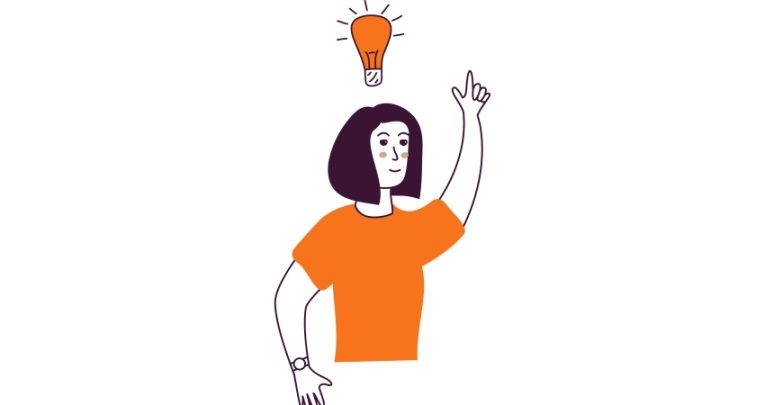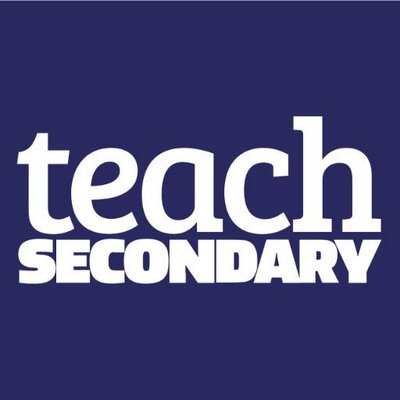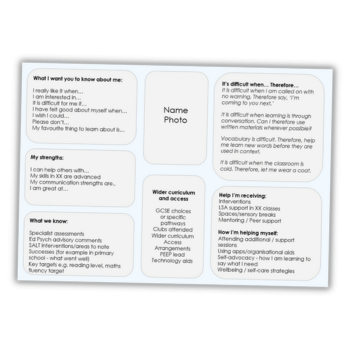Classroom practice – What single change made you a better teacher?

Six educators share their recollections of that one change that did the most to reshape and alter their practice for the better…

- by Teach Secondary
- Magazine featuring expert advice, inspiring lesson plans and fresh insights

Sometimes, all it takes is making a single change – just one alteration – to have a sizeable impact on students’ engagement, understanding and outcomes.
Below, we hear from several educators who were fortunate enough to locate that elusive, singular adjustment to their practice or professional circumstances that made all the difference. Here are their stories…

Make resources more accessible
Helen Milner – Head of humanities at Jerudong International School, Brunei
The problem:
Our textbooks were outdated and in short supply. There was a lack of bespoke resources available to students before, during and after lessons had been delivered.
The change:
I created a Google Site for each teaching group with lesson-by-lesson objectives, resources, further readings and keywords, as well as links to revision materials.
The result:
Students are now able to access the resources used in lessons both beforehand and afterwards. EAL learners, for example, can read material before lessons if they wish, and all can go over work independently afterwards, or when lessons are missed.
This has made pointing students to other helpful resources more streamlined, and ensures that all material shared relates to their course, limiting the likelihood of confusion, or students going off on tangents.

Change up the space
Lucy Alys – Head of art & design at Crickhowell High School, Powys|
The problem:
Lack of student ownership in the classroom.
The change:
I’ve always made space for my sixth form learners to work in my classroom – but after essential work forced us to clear out our art room, I made it my priority to review how we used the room, and make sure every sixth form student had their own mini-studios.
The result:
This changed my learning environment and the ethos of my classroom, and I’m never going back. Our new sixth form art studio space, ’Y Stwidio’, is a wonderfully messy hive of experimentation, with lots of work left out for unplanned critique by peers and to inspire K3 and KS4.

Put things in context
Hannah Day – Head of art, film and media at Ludlow College
The Problem:
A lack of understanding as to how topics sat together, with no sense of historical context.
The change:
We started by creating a timeline with students, pinpointing key technical developments, artists and art movements which we then linked to each unit. We supported this with excerpts from a documentary looking at the history of photography.
The Result:
Students now understand much better where an artist’s work or processes sits in terms of the development of photography, as both a technical medium and an artform. A similar approach could be applied to other subjects involving ideas that have developed and grown over a period of time – be it physics or philosophy – where many involved in the subject are building on what came before.
Realising that choices were different and more limited for many who came before led to a greater sense of the world these artists lived in, and so helped students create more informed and relevant analysis.

Take time on terminology
Emelia Taylor – Head of geography at Trinity High School and Sixth Form Centre, Redditch
The problem:
Students struggled to remember subject terminology and structure clear responses to exam questions.
The change:
I designed a stepped writing approach encompassing a range of strategies, including cubing questions, structuring responses, developing key terms as a class, sentence starters and providing opportunities to answer questions. Students then received feedback and a chance to redraft their responses.
The result:
It’s been a great tool for promoting the modelling of work in the classroom and collaborative learning. Students have become more confident at answering the exam questions, since they know more what to expect and have become increasingly independent with their responses over time.
It’s been a great way of supporting all students – those of lower ability, with SEND, receiving Pupil Premium or of higher ability – who need to work on their structure. I’ve observed an increase in engagement from students, better structures in their responses when it comes to topic assessments and a rise in student attainment for higher mark responses.

Change your source material
Caroline Birks – Content creator and tutor for English, Media and Film at likemaria.co.uk
The problem:
Lack of student understanding within one particular exam unit.
The change:
When preparing for an exam on gender representation, I’d always used Fawlty Towers and The Office – two great texts that both the students and I loved, but which perhaps didn’t enable good comparisons to be made within the topic.
Instead, I sought out sitcoms based more on how they represented their chosen themes, rather than perceived ’quality’, and changed to using My Family and Everybody Loves Raymond.
The result:
The new texts were easier to compare, enabling students to develop a deeper understanding gender depictions. Soon afterwards, we achieved our best ever results on that paper.
Move schools
Anonymous
The Problem:
A low quality of student work, made worse by a lack of senior leadership support.
The Change:
After struggling at the school I was working in – having received very little management support, and seeing issues with student work and behaviour go unresolved – I realised I had to move schools.
The Result:
My new school has clear sanctions and support in place, and set actions to follow when work isn’t completed. Parents are kept regularly informed, so that any issues can be resolved when they arise.
I wish I could have done more with the students at my last school, but without better support, moving schools was the one change I simply had to make.
The student perspective
Some streamlined, yet helpful ways of canvassing feedback on your lessons from students
Exit polls
At the end of each lesson, give students a token – a simple button will do. As they leave, they must place their token in one of three pots, labelled ’I understood the lesson’, ’I understood parts of the lesson’ and ’I understood little of the lesson’.
See how your students did on average, and then re-work any lessons that prove problematic.
Thumbs up
When covering a tricky concept, ask students to hold up their thumbs to indicate their level of understanding. A full thumb up shows they’ve got it, a thumb down indicates that they’re stumped, while a thumb held sideways communicates that they’ve partially understood it.
Use this to gauge a class’ average level of understanding so that you know when to go back.
1 to 10
List the 10 aspects of your subject you feel are most important to get right – such as the teaching space, the physical and electronic resources you use, levels of homework set, lesson tasks, etc.
Ask your students to then rank these in order of which they like the most. Do certain elements get repeatedly placed at the bottom? If so, this is where you should place your focus.







